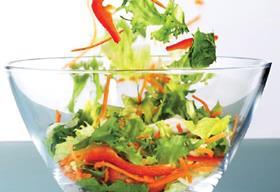
'Blue Planet' anxiety around single-use plastic is making its mark on the fresh produce market.
Alongside the growing popularity of keep cups and bags for life, consumers are also turning away from heavily packaged products. As touched on in my recent article for FPJ, wholehead produce, which is often plastic free, is consistently selling better than plastic-wrapped, prepared alternatives. Sales of prepared and pre-packed fruit and vegetables are down by 4.5 per cent compared to last year, with concerns around plastic waste playing a significant role.
Shoppers bought prepared produce an average of 7.8 times in the latest 12-week period, while wholehead was taken home at over three times that rate. Sliding sales for prepared produce are primarily driven by a slip in vegetable purchases, down by 4.6 per cent, as people turn away from items like pre-peeled carrots and ready-crushed garlic which come packed in plastic.
This should hardly come as a surprise. Some 70 per cent of consumers say they plan to use less single-use plastic, while 44 per cent indicate they are more concerned about plastics in packaging, showing that the days of unthinking consumption are on their way out.
With customers increasingly motivated by ethical concerns, retailers and manufacturers must reimagine the way that fresh produce is sold. Supermarkets, including M&S, Tesco and Morrisons are already trialling plastic-free aisles that are less likely to display prepared produce. This will support wholehead products, but how can prepared produce adapt? Supermarkets could consider introducing schemes such as pick ‘n’ mix-style refrigerated counters to stock produce such as chopped onions, peeled carrots and ready-to-eat fresh fruit, all of which can be taken home or eaten on the go. After all, 513 million more snacks were eaten in the past 12 months compared with the year before, following half a decade of consistent decline, so the market is ripe for this type of innovation.
Prepared fruit and vegetables are seen by consumers as inherently indulgent and retailers must find a way to keep the convenience but cut the waste. Whether that’s by reducing what’s thrown away or introducing eco-friendly packaging, they need to find the balance.






No comments yet